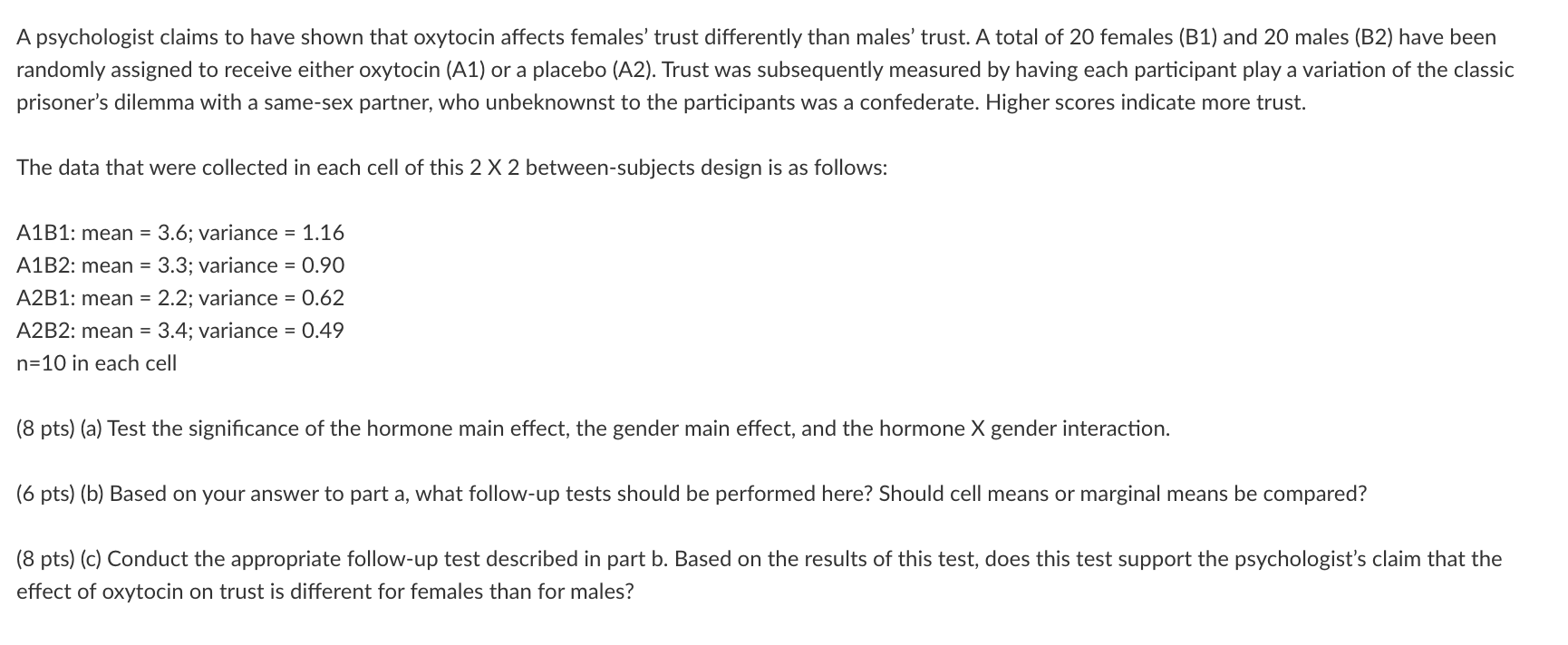(Solved): A psychologist claims to have shown that oxytocin affects females' trust differently than males' tr ...
A psychologist claims to have shown that oxytocin affects females' trust differently than males' trust. A total of 20 females (B1) and 20 males (B2) have been randomly assigned to receive either oxytocin (A1) or a placebo (A2). Trust was subsequently measured by having each participant play a variation of the classic prisoner's dilemma with a same-sex partner, who unbeknownst to the participants was a confederate. Higher scores indicate more trust. The data that were collected in each cell of this
2\times 2between-subjects design is as follows:
A1B1: mean =3.6; variance =1.16
A1B2: mean =3.3; variance =0.90
A2B1: mean =2.2; variance =0.62
A2B2: mean =3.4; variance =0.49
n=10 in each cell (8 pts) (a) Test the significance of the hormone main effect, the gender main effect, and the hormone X gender interaction. (6 pts) (b) Based on your answer to part a, what follow-up tests should be performed here? Should cell means or marginal means be compared? (8 pts) (c) Conduct the appropriate follow-up test described in part b. Based on the results of this test, does this test support the psychologist's claim that the effect of oxytocin on trust is different for females than for males?
